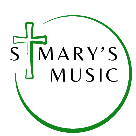THE ORGAN AT ST MARY’S CHURCH, THORNBURY
THE EARLIEST MENTION of an organ in St Mary's appears to be 1800. As far as we can tell, this was a small instrument situated in a gallery under the tower probably built by a local Bristol builder like Richard Seede and very similar to that in the local Baptist church. It replaced the Church Musicians who had accompanied the worship with a diverse selection of instruments.
Some years later, the church underwent a programme of 'Victorian Reform' where one of the main features was the standardisation of the pews. Hitherto, each family had provided their own enclosures, the average height of which was over five feet! It was at this time that the original instrument was moved from the West gallery to its present position. The limitations of the 1800 organ were recognised and it was replaced by a two manual instrument built by W C Vowles of Bristol in 1870.
In 1901 some repair work was carried out, probably due to a leakage from the organ chamber roof. This fact has only come to light in the 1988 renovations when the Great Soundboard was opened up. A feint pencil message reads:
“THE ADVENT OF ELECTRICITY rendered redundant the skills of the organ blower. Many of these hard- working gentlemen have left their marks on the interior woodwork of the instrument and these panels have been preserved”. Opinions vary about the exact date of the electric blower, but it was probably installed in the late 1920s.
It was at this time that the instrument was given a major overhaul and also received the addition of pneumatic action. This is where air pressure is used to help to play the pipes from the console and it replaced the time-honoured system of levers and rods called tracker action. The new action enabled the super octave and sub octave couples to be added to the scheme.
In the 1940s some 'patching up' was necessary and minor repairs were made (including replacing the worn portions of the pedal board). However, despite this work, by 1952 a report called the organ "worn" and by 1986 some parts were completely unusable. Between these two dates several schemes were proposed including the complete replacement of the instrument with one from a redundant church. In 1986 the organist, Nigel Davies, undertook a detailed survey of all the possibilities regarding an organ for St Mary's. These included replacement by a new pipe instrument; replacement by a new electronic instrument and the complete restoration of the existing instrument. The PCC were unanimous in their acceptance of the third of these possibilities.
By today's standards there was little remarkable about the 1870 organ, especially when compared with the instruments in nearby Wotton-under-Edge and Dursley However, the locally built Thornbury instrument was capable of some beautiful sounds, particularly from the wooden flute pipe. The instrument was given an electric action and a new console facing south into the Quire and a trumpet stop was also added at this time. The final result is a tribute to the builders, Percy Daniel and Company, whose painstaking and diligent craftsmanship from the removal of the first pipe to the replacement of Vowles' original name plate was exemplary.
The organ was rededicated by the Vicar, the Reverend Canon Michael Vooght, on Easter Day 1988 and a short recital given by Nigel Davies inaugurated a series of Sunday afternoon recitals given by local organists.
After 27 years of faithful service the organ was due for a major technical overhaul. While the 1988 rebuild had added colour and tonal flexibility to the organ, it was felt that the instrument had been left short of a proper reed chorus on the Great and was lacking softer flue stops to accompany choral music. With the key- and stop actions being worn out and the piston system outdated, it was decided to raise money for an ambitious refurbishment scheme that would see the addition of a third manual and several 8’ and 4’ stops, including a Diapason 8’ on the Swell; addition of a chorus trumpet on the Great and re-voicing of the Bombarde 16’ in the pedal; replacement of the piston combination system by the cutting-edge SoftArt computer control system. Thanks to the generosity of various local sponsors and a major contribution from Cory Environmental Trust the refurbishment was completed by Clevedon Organ Group Ltd in 2016. While the tonal core of the instrument remained untouched, the organ is now much more versatile, dynamically differentiated and clearer in speech. The new computer control system offers a wide range of possibilities such as the programming of additional couplers and stop extensions, recording, or the potential connection of a second console. It is no exaggeration to state that what had once been a made-to-fit former Victorian village organ has now been turned into a fully-fledged concert instrument.
Specification of the organ as built in 1870 by W G Vowles
https://www.npor.org.uk/NPORView.html?RI=N05791
Specification of the 1988 rebuild by Percy Daniel and Company
https://www.npor.org.uk/NPORView.html?RI=V00544
Specification of the 2016 rebuild by Clevedon Organ Group Ltd
https://www.npor.org.uk/NPORView.html?RI=V00530




